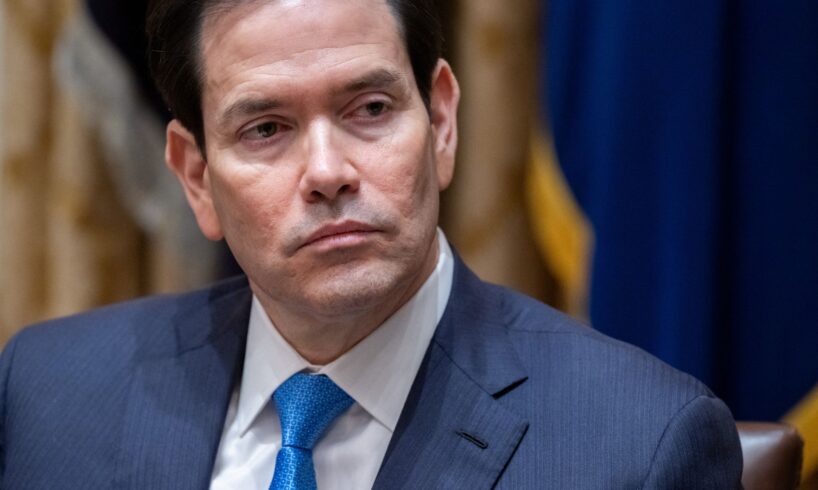
The U.S. bipartisan Senate delegation attending the Halifax International Security Forum had received a phone call from Secretary of State Marco Rubio.
In it, Rubio was quite frank.
According to Republican Senator Mike Rounds, Rubio told senators that the 28-point peace plan drawn up by Special Envoy Steve Witkoff and his Russian counterpart, Kirill Dmitriev, was actually a Russian plan that the U.S. had agreed to pass along to Ukraine.
“Secretary Rubio made a phone call to us this afternoon. I think he made it very clear to us that we are the recipients of a proposal that was delivered to one of our representatives. It is not our recommendation, it is not our peace plan. It is a proposal that was received,” Rounds said on Nov. 22.
“As an intermediary, we have made arrangements to share it. And we did not release it,” he said.
“This was a proposal that was received by someone who has been identified and they believed to be representing Russia in this proposal. It was given to Mr. Witkoff.”
Democratic Senator Jeanne Shaheen said following the call with Rubio that “there is nothing that we understand that the administration had said that they intend to cut off either the PURL program or intelligence sharing.”
Following the revelation, Rubio issued a statement contradicting the senators’ reports.
“The peace proposal was authored by the U.S. It is offered as a strong framework for ongoing negotiations. It is based on input from the Russian side. But it is also based on previous and ongoing input from Ukraine,” Rubio wrote.
A day prior, White House Press Secretary Karoline Leavitt stated that Rubio and Witkoff have been developing the peace plan together over the past month.
She said both have been “engaged with both sides” and that the president backs the effort.
How Steve Witkoff pushed Ukraine sympathizers out of White House, and led the US into Russia’s arms
But a source familiar with the matter told the Kyiv Independent that Rubio had no involvement in crafting the new plan. According to a high-ranking U.S. official who spoke on condition of anonymity, the current plan is supported by U.S. Vice President JD Vance, while other top U.S. officials were excluded from the negotiations process.
U.S. President Donald Trump said on Nov. 21 that President Volodymyr Zelensky will “have to approve” a U.S.-proposed peace plan to end Russia’s war against Ukraine, adding that he has already spoken with Ukrainian representatives about the proposal.
Speaking to reporters, Trump said, “We think we have a way of getting peace. He’s going to have to approve it,” adding that he thought Ukraine should have acted quicker. “… It’s a cold winter and a lot of the big energy-producing plants have been under attack, to put it mildly, to put it nicely.”
Zelensky officially addressed the Ukrainian public on Nov. 21, responding to growing concerns over a new peace proposal that reportedly reflects Russia’s longstanding demands.
In his message, Zelensky acknowledged the growing diplomatic pressure on Ukraine, calling the current moment “one of the most difficult” for the country.
“Ukraine may soon face an extremely difficult choice. Either the loss of dignity or the risk of losing a key partner. Either 28 complicated points or the hardest winter yet — and the risks that follow,” Zelensky said.
Senior officials from the U.S. and Ukraine will meet in Switzerland on Nov. 23 to discuss the new joint U.S.-Russian peace proposal put forward by the White House this week.
Rubio would be the highest-ranking official from the U.S. side, while the Ukrainian delegation would be led by Andriy Yermak, head of the President’s Office.
Why Trump’s 28 point peace plan for Ukraine is different





